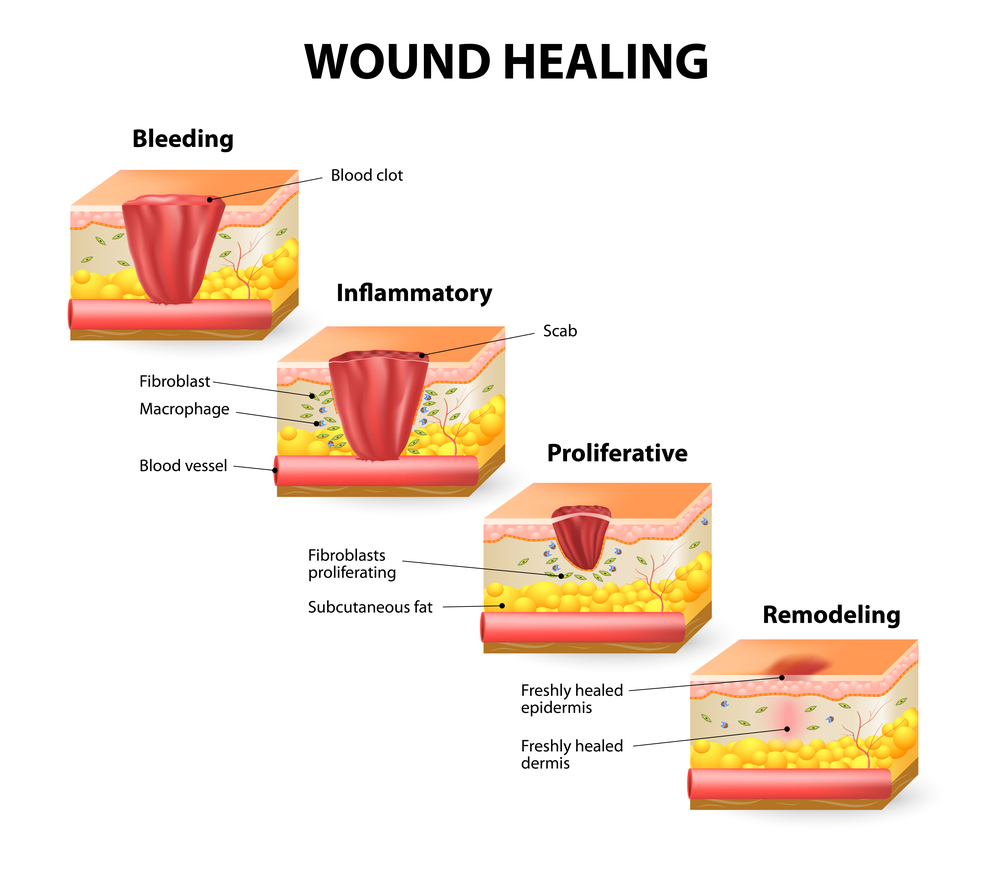Bleeding can occur through many different means, such as an RTC or knife crime. As a First Aider, you should always try and stop the bleeding as fast as possible, especially when the bleeding is classed as a catastrophic bleed. When bleeding, the body starts to repair injuries within the first 24 hours but the healing process can take up to 21 days.
Blood
There are four main constituents of blood. These are blood plasma, red blood cells, white blood cells and platelets. Each is very different but is vital for survival:
- Blood Plasma – Dilutes the blood and holds the other part of blood and essential nutrients. This allows them to be transported around the body.
- Red Blood Cells – Biconcave cells which are just smaller than the diameter of a capillary. Contains haemoglobin which allows the binding and unbinding of Oxygen. This is essential for aerobic respiration.
- White Blood Cells – These make up your immune system, and are split into two main groups – Phagocytes and Lymphocytes. These work together to identify (lymphocytes) and engulf and destroy (phagocytes) any harmful pathogens/infections in the body. Lymphocytes are specific whereas phagocytes are general.
- Platelets – Small cells which help to form blood clots and stop bleeding should it occur. When a blood vessel is damaged, these platelets will attempt to plug up the newly formed hole. These are the most important of the four in the healing process to bleeding.
The clotting mechanisms the body uses attempts to seal any torn or damaged blood vessels. This is so blood cannot escape into the surrounding tissues or out of the body entirely. Since plasma makes up the majority of blood, we want to keep as much of it in your body as possible. The plasma allows the transport of white blood cells and more platelets to the site of the injury. More platelets means more clotting, and more white blood cells means less chance of an infection.
Clotting Mechanisms
Healing happens in three different mechanisms:
- The first is vascular spasm, which is where smooth muscles in the blood vessel walls contract as soon as the vessel is broken. This slows the bleeding while the other mechanisms become active.
- The next mechanism is platelet plug formation. This is when the blood platelets arrive at a damaged vessel and become sticky. Here they form a type of plug to help close the gap in the broken blood vessel. However, this is only temporary and does not last long. The third mechanism is needed to stop the bleeding completely.
- The third mechanism is coagulation. Once the blood comes to the surface and leaves the blood vessels, it thickens and become a texture similar to a gel. Blood clotting is actually when blood becomes solid and occurs when the temporary plug and clotting factors from the blood react. Consequently, a web of fibre forms and eventually it becomes a clot. Once this has formed, white blood cells can effectively fight infection. One condition which affects coagulation is Coagulopathy.
After this, the healing process can begin.
The Healing Process
There are four main stages to the healing process:
- Absorption – The liquid involved in swelling is reabsorbed back into the body.
- Removal – The blood clots and any other debris is removed from the area and then the body as waste.
- Growth – New blood capillaries form to transport blood both to the wound site around the body.
- Scar Tissue – Stronger tissues form in place of the wound which helps to prevent further injury.
After the first 12 hours since the injury occurred, the cells become active and new capillaries form. They gradually grow and establish new blood circulation in the area. If this did not happen then the injury would not heal. You must have a blood supply for the repair of the damaged tissue. As there is new circulation, the debris of dead tissue cells and the initial blood clot can be cleared. The tissue that was damaged gets repaired as scar tissu. This is the fibrous scar tissue is around the injury, which is slightly different to scar tissue you would have on the outer skin.
For more information on training courses, visit our “Courses” page which also includes our First Responder and First Person on Scene (FPOS) Courses.

